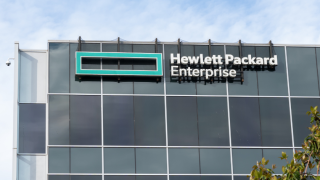Research commissioned by Liberty Global points to opportunities for Network-as-a-Service (NaaS) to be worth US$150bn by 2030.
For Dan Pitt, president at Palo Alto Innovation Advisors, this isn’t surprising in the least.
“For one thing CSPs have always offered network services (as a service) so a lot of things can be claimed to be some form of NaaS.
“Also, 2030 is a long way away. Substantively, however, the figure is credible with the modern understanding of NaaS, which means dynamic service creation and lifecycle through automated means.”
Increasingly, Pitt says, these services will be cloud-based so a not-insignificant portion of this revenue figure will flow to the hyperscalers.
While much has been made of the potential of NaaS for telcos, for Pitt, NaaS is a matter of remaining competitive.
“The benefits will be a combination of increased revenue streams and decreased operating costs,” he says.
What is NaaS?
But before that, it’s important to understand what exactly NaaS refers to. At its core NaaS bundles the hardware and software of an enterprise network into a single product and makes it available on a subscription basis.
Rather than invest the capex and human resources into managing network infrastructure by itself, an organisation using a network as a service model can outsource the interconnection of its clouds, applications and devices, ensure they are secure and ensure they are always finetuned for the optimal outcome.
Developers will be able to use NaaS Application Programming Interfaces (APIs) to create customer-centric propositions, which allows businesses to be truly agile as they scale up or down their network’s bandwidth, security and latency settings, or extract vital information from the network to improve the effectiveness of services.
According to Sharon Rozov, marketing CTO at RAD Data Communications, NaaS is designed to enhance flexibility and automation within the existing network framework.
To grasp the potential and benefits of NaaS, Rozov believes it is essential to explore the full spectrum of network capabilities and identify their practical applications. Some examples, she points out, include bandwidth-on-demand, service-based traffic engineering, cyber-attack mitigation and traffic steering.
Monetising the network
Given the astronomical sums involved with NaaS, attention will turn to how telcos can use the business model to boost profits.
According to Pitt, the increased revenue streams will derive from services that enterprises can customise and tailor to their particular needs for connectivity, edge services and security. The cost savings, Pitt explains, derive from two factors – shared infrastructure and reduced staff to support services thanks to automation and cloud-native design.
Yet despite there being several opportunities for enterprises to monetise the NaaS business model, the apps and services that telcos can offer as part of this have not been thought of yet.
“I continue to hold out hope that the telcos will successfully grow their edge-computing capabilities and offerings,” Pitt says.
“There are not enough low-latency applications to justify much investment at the edge but there will be both interference and even training needs for machine learning that cannot afford sending everything to the core.”
More of these customers will be considered industrial rather than commercial, Pitt says.
He adds that the transformation of enterprise IT illustrates the shift from infrastructure to applications and data, which increasingly reside in the cloud, not on the customer premises.
As IT support leaves many customer sites, especially branch offices and retail locations, Pitt says telcos have a significant opportunity to penetrate the customer with Campus NaaS handling their internal and external connectivity needs.
“These will represent a different understanding of how the customer interacts with NaaS because these locations will have no DevOps or NetOps staff at all.
“But the main thing to remember is that the network is only a means to an end where the end is a business objective for the customer so the savvy telco will introduce application-level services in the guise of NaaS and if the NaaS is well-defined, customers will think they have their own private services and applications.
“Think, for example, of location-based services that provide value to the telco’s customer and to their customers. There is a whole realm of possible services provided to municipalities and government agencies that can be created with the relatively simple addition of IoT sensors to the existing telco network.
“And I have not even touched on mobile services.”
Creating an ecosystem
With regards to the services, platforms and ecosystems required for NaaS to thrive – Pitt says automation will be key moving forward and central to that is APIs. There is currently a battle around what this entails and who gets to define them.
But will they be official, multi-party standards or proprietary, single-party ones?
“Right now, there is an explosion of APIs but these do not represent broad industry agreement or participation; someone just puts theirs out there,” Pitt says.
But Rozov notes that there is a “nice ecosystem” in place following the announcement of the GSMA Open Gateway.
This is a framework of APIs designed to provide universal access to operator networks for developers and hyperscalers.
The initiative allows developers to break into new markets, offering new services and functionality to customers. It also facilitates faster and more efficient negotiations between mobile network operators MNOs and third parties by removing the risk of contradictory terms and conditions from different MNOs.
For Rozov, what’s needed is a marketplace of different ‘nuggets’ from the network that they can expose to NaaS functionalities.
“This is something that is going to improve over time,” she says.
“Now they’re capable of exposing things like throughput information, quality of service information and slice information but in the future, we will be able to expose more complex services to be used by providers.”
Also important, according to Pitt, is what skills and systems will be needed on the customer side to support and take advantage of them. The key to profitable services will be an entire cloud-native infrastructure under the control of the CSPs (communication service providers).
With regards to the ecosystem required, Pitt says this is increasingly interesting because it portends the fading importance of the term CSP.
“Fewer and fewer service providers will be monolithic and vertically integrated,” Pitt says.
“The stratification of the industry that we have already seen will accelerate with the growth of specialised providers of disaggregated functions that can be composed to create services.”
This, Pitt believes, will continue to require service interfaces (APIs if automated) so that, for example, unique transport infrastructures can be inserted without modification to the services and applications that run above them.
“The top of the pyramid will be the operator with whom the customer transacts – that operator will assemble the functions on a dynamic basis, needed to offer a particular service.
“Moreover, the most successful service providers will offer platforms that third parties can build on with no effort required by the provider, just a revenue share.”
The general consensus for NaaS is that it will lead to substantial market growth for telcos over the next five to 10 years. So, the notion that NaaS will be worth $150bn by 2030 isn’t farfetched.
But as Pitt mentioned earlier, “2030 is a long way away”.






